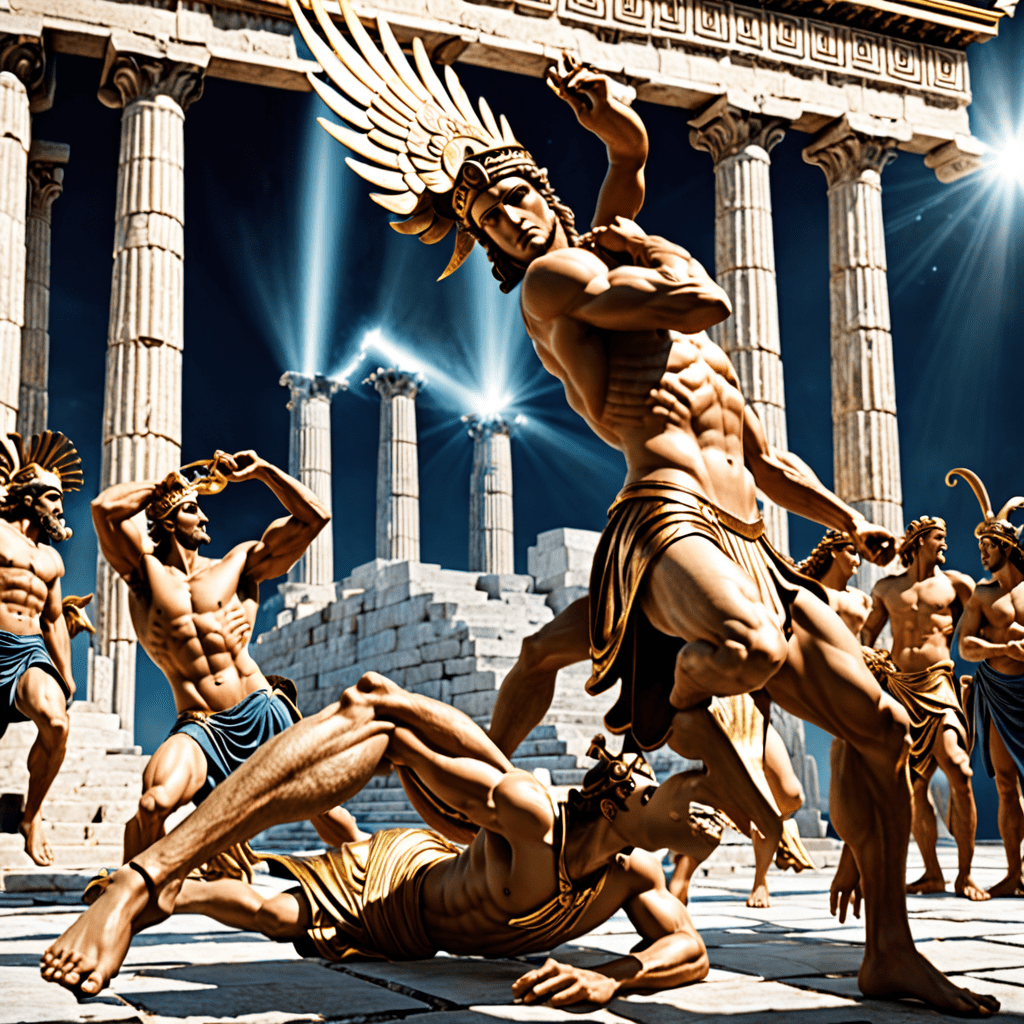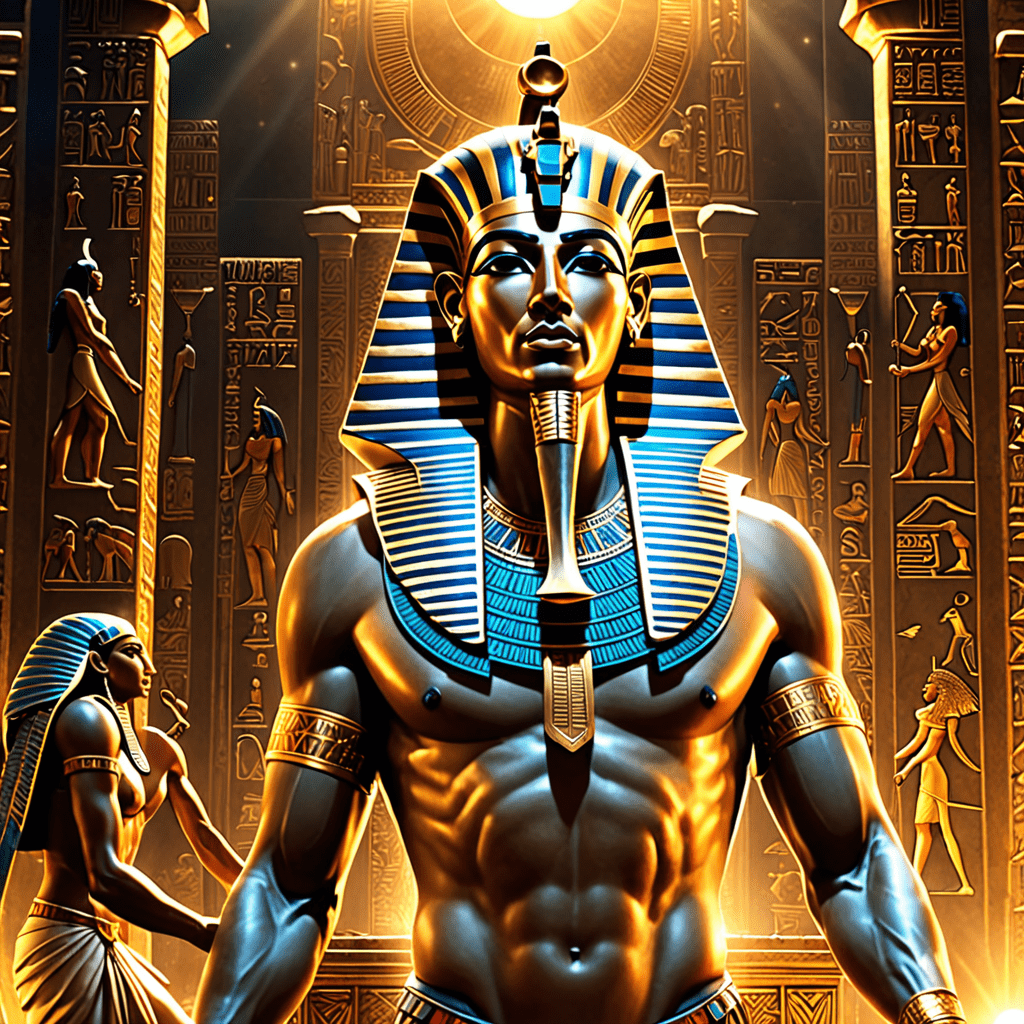When Mortals Anger the Divine: Terrifying Punishment Stories Across Cultures
I. Introduction
The theme of divine retribution resonates deeply across cultures and time periods, highlighting the dire consequences faced by mortals who dare to provoke the wrath of the gods. These stories serve not only as cautionary tales but also as reflections of the values and beliefs held by different societies. Understanding the importance of divine punishment reveals much about the moral frameworks that govern human behavior and the role of fear in maintaining social order. This article will explore various narratives of divine anger from different cultures, illustrating how these tales convey profound moral lessons.
II. Understanding Divine Punishment
Divine punishment refers to the consequences enacted by deities upon mortals for their transgressions. This concept is prevalent in mythology and religion, often serving as a tool to enforce societal norms and moral conduct.
The psychological and moral implications of divine punishment are significant. They encourage adherence to societal rules and reinforce the idea that actions have consequences. The fear of divine retribution can act as a deterrent against wrongdoing, thus maintaining social order.
III. Ancient Greek Mythology: The Fury of the Gods
In Ancient Greek mythology, the gods were known for their volatile tempers and often punishing mortals for perceived slights or hubris. The tales of their wrath serve as stark reminders of the power dynamics between the divine and humanity.
Some notable stories include:
- Niobe: A queen who boasted about her children, leading to the deaths of her offspring at the hands of Artemis and Apollo as punishment for her hubris.
- Arachne: A talented weaver who challenged Athena, only to be transformed into a spider for her arrogance.
These myths illustrate the consequences of pride and the importance of humility, teaching mortals to respect the divine order.
IV. The Hebrew Bible: Wrath and Redemption
In the Hebrew Bible, narratives of divine punishment often intertwine with themes of justice and mercy. Examples include:
- Sodom and Gomorrah: The cities were destroyed due to their wickedness, illustrating the consequences of immorality.
- The Great Flood: A divine reset of creation due to humanity’s corruption, sparing only Noah and his family.
These stories reflect a balance between justice and mercy, highlighting the potential for redemption and the importance of repentance. They have significantly influenced Jewish theology and ethics, emphasizing the need for moral living.
V. Hinduism: Karma and Divine Retribution
In Hindu belief, the concept of karma underscores the idea that every action has consequences, both in this life and the next. This principle is deeply intertwined with stories of divine punishment.
Examples include:
- King Harishchandra: His unwavering commitment to truth led him to experience severe trials, illustrating the moral complexities of righteousness.
- The Tale of Draupadi: The humiliation of Draupadi in the Kaurava court sparked divine intervention, leading to the epic battle of the Mahabharata.
These narratives emphasize moral living and social responsibility, reinforcing the idea that one’s actions have far-reaching implications.
VI. Norse Mythology: The End of Days
Norse mythology presents a pantheon of gods who often interacted with mortals in dramatic and harsh ways. The consequences of angering these deities were dire, as illustrated by various tales of divine wrath.
Noteworthy examples include:
- Loki’s Punishment: After causing the death of Balder, Loki was bound by the gods as punishment, representing the consequences of betrayal.
- Ragnarok: The prophesied end of the world where many gods die, symbolizing the inevitable punishment for the chaos caused by mortals and gods alike.
These stories contribute to the cultural significance of fate and destiny, reminding societies of the precarious balance between order and chaos.
VII. Indigenous Beliefs: Nature’s Vengeance
In many indigenous cultures, the divine is closely connected to nature, and stories often reflect the consequences of disrespecting natural laws or spirits.
Tales of angering nature spirits include:
- The Great Flood: Found in various cultures, these stories often serve as warnings against environmental exploitation and the importance of living in harmony with nature.
Such narratives impart lessons about respect for the environment and the interconnectedness of all life.
VIII. Modern Interpretations: Divine Retribution in Literature and Media
Contemporary storytelling continues to reflect ancient themes of divine punishment, showcasing their relevance in today’s social context. Literature, films, and art often explore the consequences of moral failures and the quest for redemption.
Examples include:
- Films like “The Ten Commandments” and “Noah,” which depict biblical narratives of divine wrath.
- Literary works such as “The Handmaid’s Tale,” which examine the consequences of societal transgressions.
These modern interpretations serve to remind audiences of the timeless nature of moral lessons and the consequences of straying from ethical paths.
IX. The Moral of the Stories: Lessons for Humanity
Across cultures, common themes emerge from the stories of divine punishment:
- The importance of humility and respect for the divine order.
- The consequences of moral transgressions and the potential for redemption.
- The need for harmony with nature and the acknowledgment of our interconnectedness.
These narratives encourage reflection on human behavior and the values that guide societies, reminding us that the divine often watches over our actions, ready to enforce moral order.



